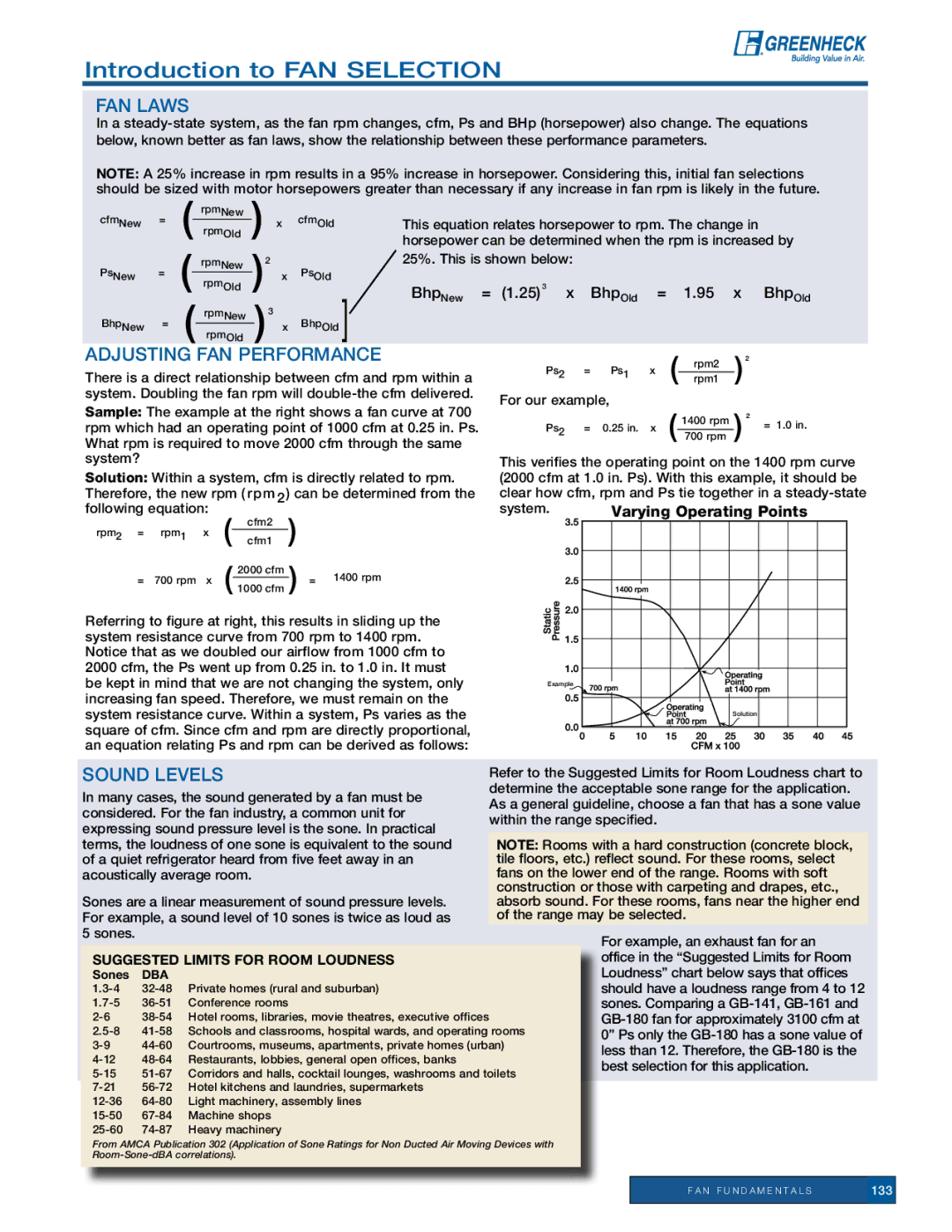129 specifications
Greenheck Fan 129 is a notable addition to the HVAC industry, recognized for its advanced technology and efficient performance. Designed primarily for ventilation, exhaust, and supply applications, the Greenheck Fan 129 excels in various commercial and industrial settings.One of its key features is its robust construction. The fan casing is made of high-quality, corrosion-resistant materials, ensuring long-term reliability even in challenging environments. This durability is complemented by precision-engineered components, such as the impeller, which is constructed with advanced aerodynamics to optimize airflow and reduce noise levels. This focus on sound performance is particularly important in settings like schools and hospitals where acoustics are crucial.
The Greenheck Fan 129 also stands out due to its energy efficiency. It employs high-efficiency motors that meet or exceed the latest EPA and ASHRAE guidelines. This feature not only reduces operational costs but also supports sustainability efforts in organizations aiming to minimize their environmental footprint. With variable speed drive options, users can further enhance energy savings by matching fan speeds to the specific requirements of their application.
Safety and ease of maintenance are other significant considerations in the design of the Greenheck Fan 129. The fan includes access points that simplify inspections and repairs, reducing downtime and maintenance costs. Automated monitoring systems can also be integrated, providing real-time feedback on fan performance and system health to ensure that it operates at peak efficiency.
Moreover, the Greenheck Fan 129 is versatile in installation options. It can be mounted in various configurations, making it suitable for roof-mounted, wall-mounted, or inline applications. This adaptability makes it a favorite among engineers and contractors looking for reliable and flexible solutions for HVAC systems.
In summary, the Greenheck Fan 129 represents a blend of high performance, energy efficiency, and ease of use. Its durable construction, advanced aerodynamics, and safety features make it an ideal choice for a wide range of ventilation requirements. Whether for commercial buildings or industrial facilities, the Greenheck Fan 129 stands out as a top-of-the-line option for reliable and efficient airflow management.

